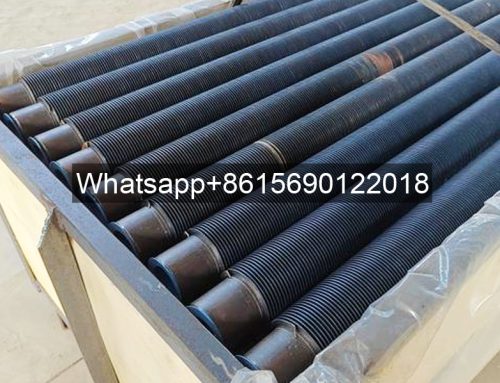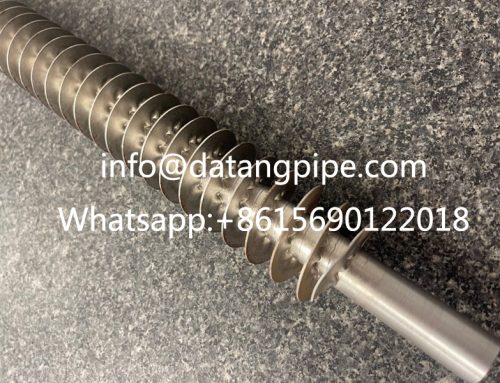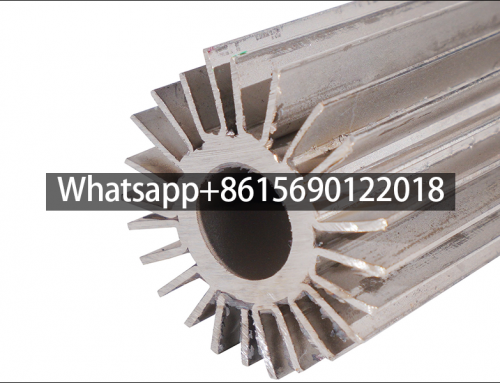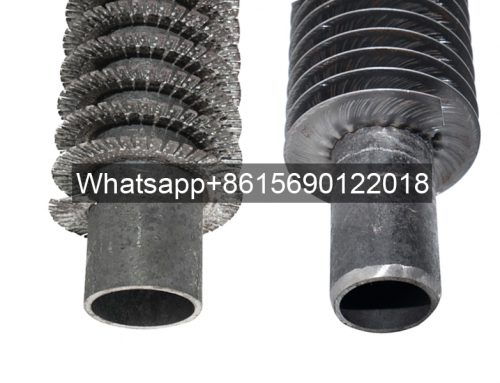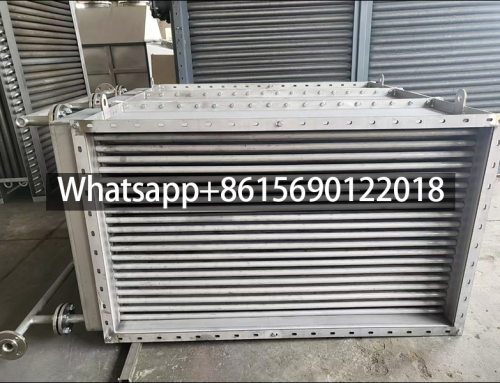How to Prevent Corrosion of Industrial Fin Tube Heat Exchanger Fins?
How to prevent corrosion of industrial finned tube radiator fins?
To prevent corrosion of industrial finned tube radiator fins, we need to start from material selection, surface treatment, and daily maintenance. The following are specific methods:
Preferably choose stainless steel (such as 304, 316L) with strong corrosion resistance. Carbon steel fins are easy to rust and can be used in dry, non-corrosive gas environments. Otherwise, they need to be protected by coating. Use coated metal (such as galvanized, steel-aluminum composite fins, and protect the inner substrate with an outer layer of corrosion-resistant metal.
In order to avoid liquid accumulation and dust accumulation, the fin spacing and arrangement should be reasonably designed to avoid airflow dead corners that cause dust and liquid retention (such as using large-pitch fins or serrated fins to enhance self-cleaning capabilities). The radiator is installed at an angle or a guide groove is set to ensure that condensed water or corrosive liquids are discharged smoothly.
Daily maintenance and inspection: timely detection and treatment of corrosion
It is necessary to regularly clean and inspect the dust, dirt and corrosion products on the fin surface to avoid the formation of a “corrosion battery” (such as dust absorbing moisture to form an electrolyte). Regularly visually inspect the fin surface for rust spots, plating shedding or coating damage, focusing on welds, overlaps and other easily corroded areas.
Strategies for Preventing Corrosion in Industrial Finned Tube Heat Exchangers
1. Material Selection
Optimal material selection forms the foundation of corrosion resistance. Different materials offer varying levels of protection based on operating environments:
| Material Type | Corrosion Resistance | Suitable Environments | Temperature Limit |
|---|---|---|---|
| Stainless Steel (316L) | Excellent | High chloride/moisture environments | ≤650°C |
| Stainless Steel (304) | Good | Moderate acidic/chemical exposure | ≤650°C |
| Carbon Steel + Coating | Moderate | Dry, non-corrosive gases (requires coating) | ≤400°C |
| Aluminum/Copper Alloys | Excellent | Low-temperature aqueous media | ≤200°C |
Stainless steels form passive chromium oxide layers that resist acidic compounds prevalent in flue gases14, while aluminum alloys naturally develop protective alumina films8. Carbon steel requires supplementary protection like epoxy coatings for corrosive settings.
2. Surface Treatment Technologies
Advanced surface treatments provide sacrificial or barrier protection:
| Treatment Method | Process Description | Protection Mechanism | Effectiveness |
|---|---|---|---|
| Hot-Dip Galvanizing | Zinc immersion at 450°C | Sacrificial anode protection | 15-20 years |
| Electroless Nickel | Autocatalytic Ni-P deposition | Barrier against pitting corrosion | 10-15 years |
| Epoxy/Polymer Coating | Spray-applied 200-300μm layer | Isolation from corrosive media | 8-12 years |
| Chromium Plating | Electrolytic Cr deposition (3-10μm) | Enhanced surface hardness & passivation | 7-10 years |
Galvanizing protects through zinc’s preferential corrosion6, while polymer coatings create impermeable barriers against moisture and acids5. Combined stainless steel base material with epoxy coatings yields optimal results in sulfur-rich exhausts.
3. Design Optimization
Key design modifications mitigate corrosion triggers:
- Fin Geometry:
- Spiral/helical fins (pitch: 8-15mm) reduce particulate accumulation
- Serrated fin edges disrupt boundary layers to minimize liquid retention
- Drainage Systems:
- 3°-5° installation slope ensures condensate runoff
- V-shaped condensate trays collect corrosive liquids
- Flow Configuration:
- Counter-flow designs lower metal temperatures below dew point
- Turbulence promoters (e.g., staggered tubes) prevent stagnant zone
4. Operational Maintenance Protocol
Proactive maintenance sustains corrosion resistance:
| Maintenance Activity | Frequency | Critical Parameters | Purpose |
|---|---|---|---|
| Visual Inspection | Quarterly | Weld joints, fin roots, coating integrity | Early defect detection |
| Chemical Cleaning | Annually | pH-neutral detergents (pH 6.5-7.5) | Remove corrosive deposits |
| Water Quality Control | Continuous | Dissolved O₂ < 0.1 ppm; Cl⁻ < 25 ppm | Prevent electrochemical corrosion |
| Protective Recoating | 5-8 years | Coating thickness ≥ 200μm | Restore barrier integrity |
Closed-loop systems with deoxygenated water reduce internal corrosion by 70%37. Ultrasonic testing identifies hidden pitting at weld zones before failure.
Integrated Implementation Example:
A power plant boiler economizer achieved 12+ years corrosion-free operation by combining:
- 316L spiral fins (12mm pitch) with hot-dip galvanizing
- 5° sloped installation + quarterly alkali washing
- Feedwater deaeration maintaining O₂ < 50 ppb
This holistic approach addresses material vulnerability, environmental exposure, and operational hazards to extend equipment lifespan by 200% versus untreated systems.


